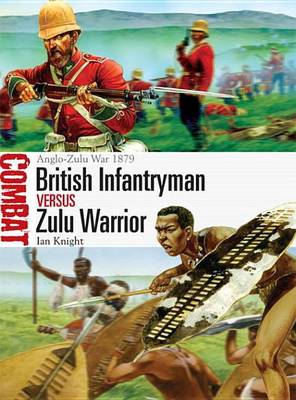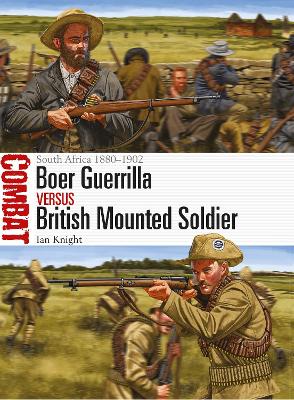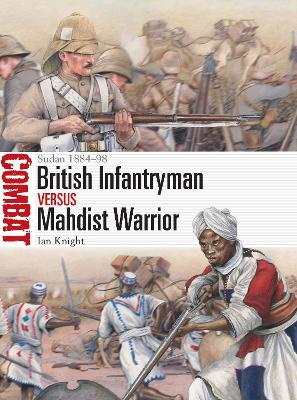Combat
1 primary work • 3 total works
Book 3
The short but savage Anglo-Zulu War of 1879 pitched well-equipped but complacent British soldiers into combat with the Zulu, one of history's finest fighting forces. The clashes between these two different armies prompted tactical innovation on both sides, as the British and their Zulu opponents sought to find the optimal combination of mobility, protection and firepower. This engrossing study traces the changing face of infantry combat in the Anglo-Zulu War. Three major engagements are detailed: the Zulu ambush at Nyezane, repulsed by the British using their established tactics; the shocking defeat and massacre of outmanoeuvred British forces in savage close-quarter fighting at iSandlwana; and the British victory at Khambula following their adoption of more condensed firing lines and prepared positions.
Waged across an inhospitable terrain which varied from open African savannah to broken mountain country and arid semi-desert, the Anglo-Boer wars of 1880–81 and 1899–1902 pitted the British Army and its allies against the Boers’ commandos.
The nature of warfare across these campaigns was shaped by the realities of the terrain and by Boer fighting techniques. Independent and individualistic, the Boers were not professional soldiers but a civilian militia who were bound by the terms of the ‘Commando system’ to come together to protect their community against an outside threat. By contrast the British Army was a full-time professional body with an established military ethos, but its over-dependence on conventional infantry tactics led to a string of Boer victories.
This fully illustrated study examines the evolving nature of Boer military techniques, and contrasts them with the British experience, charting the development of effective British mounted tactics from the first faltering steps of 1881 through to the final successes of 1902.
The nature of warfare across these campaigns was shaped by the realities of the terrain and by Boer fighting techniques. Independent and individualistic, the Boers were not professional soldiers but a civilian militia who were bound by the terms of the ‘Commando system’ to come together to protect their community against an outside threat. By contrast the British Army was a full-time professional body with an established military ethos, but its over-dependence on conventional infantry tactics led to a string of Boer victories.
This fully illustrated study examines the evolving nature of Boer military techniques, and contrasts them with the British experience, charting the development of effective British mounted tactics from the first faltering steps of 1881 through to the final successes of 1902.
In the early 1880s, Britain intervened in independent Egypt and seized control of the Suez Canal. British forces were soon deployed to Egypt’s southern colony, the Sudan, where they confronted a determined and capable foe amid some of the world’s most inhospitable terrain. In 1881 an Islamic fundamentalist revolt had broken out in the Sudan, led by a religious teacher named Muhammad Ahmad bin Abd Allah, who proclaimed himself al-Mahdi, ‘The Guided One’. In 1884, Mahdist forces besieged the Sudanese capital of Khartoum; Colonel Charles Gordon was sent to the city with orders to evacuate British personnel, but refused to leave. Although the British despatched a relief column to rescue Gordon, the Mahdists stormed Khartoum in January 1885 and he was killed. British troops abandoned much of the Sudan, but renewed their efforts to reconquer it in the late 1890s, in a bloody campaign that would decide the region’s fate for generations. Written by leading expert Ian Knight, this fully illustrated study examines the evolving forces, weapons and tactics employed by both sides in the Sudan, notably at the battles of Abu Klea (16–18 January 1885), Tofrek (22 March 1885) and Atbara (8 April 1898).


